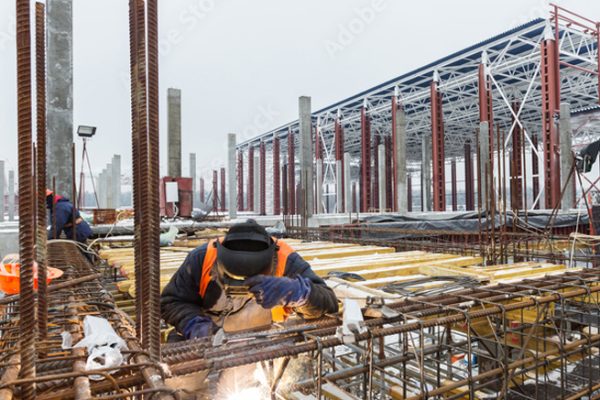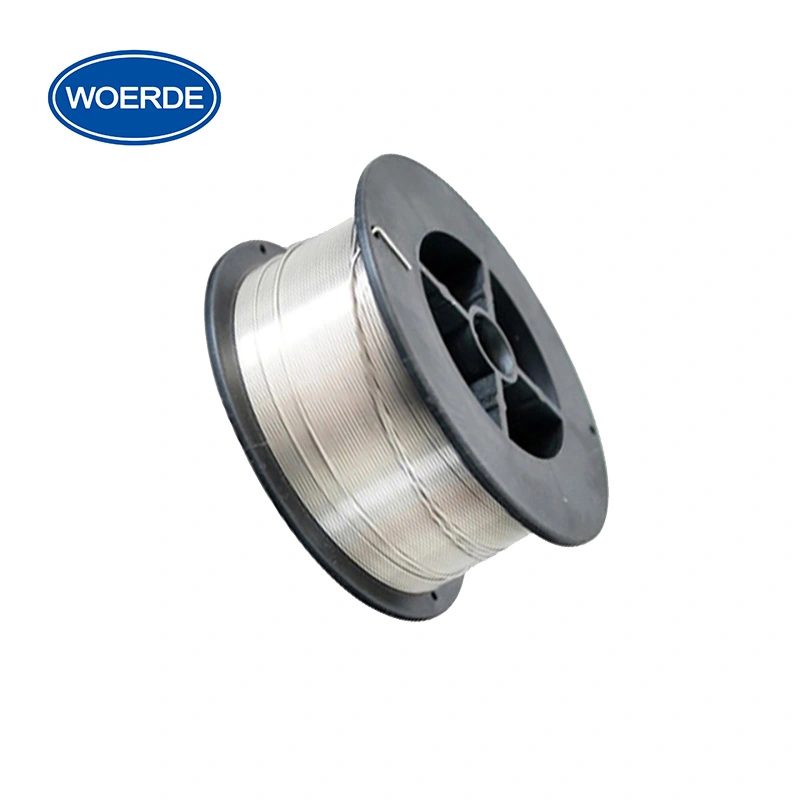
Stainless Steel Welding Wire
WOERDE is a leading manufacturer of welding consumables, specializing in the production of top-tier Stainless Steel Welding Wire. Our state-of-the-art manufacturing facility in China crafts these wires to meet the stringent demands of various industrial applications.
In addition to Stainless Steel Welding Wire, WOERDE’s extensive product line includes solid copper, flux-cored, aluminum, and copper welding wires, as well as electrodes. Our Stainless Steel Welding Wire is particularly favored in industries that require corrosion-resistant welds, such as food processing, medical, and chemical sectors.
Stainless Steel Welding Wire is part of WOERDE’s family of high-quality welding products. It is designed to provide strong, durable welds on different stainless steel materials. The advantages of WOERDE’s Stainless Steel Welding Wire include: exceptional weld quality, resistance to corrosion, versatility across various applications, and ease of use.

ER316LSi

ER321

ER347

ER410

All You Need To Know About Stainless Steel Welding Wire
Stainless Steel Welding Wire is a specialized type of welding consumable designed for joining stainless steel materials. Its unique composition ensures corrosion-resistant welds, making it suitable for applications where both strength and appearance are paramount.
Because Stainless Steel Welding Wire offers exceptional weld quality and is versatile, it is widely used in industries such as food processing, healthcare, construction, and marine fabrication. Additionally, many professionals prefer Stainless Steel Welding Wire as it is adaptable to various welding techniques, including Gas Tungsten Arc Welding (GTAW) and Gas Metal Arc Welding (GMAW).
This article provides you with everything you need to know about Stainless Steel Welding Wire. What you’ll learn includes the specific applications of Stainless Steel Welding Wire, its alloy composition to match different stainless steel grades, the techniques for achieving optimal welds, and the various types and sizes of Stainless Steel Welding Wire available. Towards the end, you can explore how Stainless Steel Welding Wire compares to other types of welding wires, offering unique benefits and versatility.
How Does Stainless Steel Welding Wire Work?
Stainless Steel Welding Wire primarily serves as a filler material in welding stainless steel components. The wire is fed through a welding gun and into the weld pool, aligning parallel to the workpiece, and an electric arc is established between the wire and the workpiece.
The diameter of this wire is carefully selected to match the thickness of the materials being welded. As the welding operation commences, the Stainless Steel Welding Wire melts and fuses with the base metal to create a strong, corrosion-resistant weld. Depending on the welding process used, a shielding gas or flux may be employed to protect the weld pool from atmospheric contamination. The welding process continues with the wire being consistently fed, and the shielding mechanism, whether gas or flux, being continuously applied.

What Are Stainless Steel Welding Wires Used For?
Stainless Steel Welding Wires are utilized in various industries that require welding of stainless steel materials. These could be the following:
- Food Processing Equipment
- Healthcare Industry
- Marine Fabrication
- Chemical Industry
- Automotive Manufacturing
- Construction Industry
- Aerospace Industry
- Oil and Gas Industry
- Power Generation
- Artistic Sculptures
Considerations When Buying Stainless Steel Welding Wire
There are times when welding operations do not yield the desired results even if the stainless steel welding wire used is of high quality. Why is this so? The answer lies in the knowledge and application of these welding wires. Understanding these considerations is part of achieving optimal welding results.
01.
Welding Process
Perhaps this is the most important consideration. Knowing the type of welding process narrows down the suitable welding wires to use. Furthermore, understanding the requirements of the welding process, such as the need for corrosion resistance or the specific stainless steel grade being welded, are part of the considerations.
02.
Material Compatibility
The stainless steel welding wire should be compatible with the materials being welded; otherwise, the weld may not be strong or durable. Incompatibility between the welding wire and the base metal can result in poor weld quality and potential weld defects.
03.
Wire Material
The material of the stainless steel welding wire should be able to withstand the heat of the welding process and combine effectively with the base metal. Another fact to consider is the chemical composition of the welding wire, ensuring it matches the stainless steel grade.
04.
Corrosion Resistance
Stainless Steel Welding Wire must exhibit excellent corrosion resistance, especially when used in applications exposed to aggressive environments. Understanding the specific corrosion resistance requirements of the application helps in selecting the appropriate grade of stainless steel wire.
Benefits of Using Stainless Steel Welding Wire
Choosing Stainless Steel Welding Wire for your welding operations offers several advantages. Here are the key benefits:
Enhanced Corrosion Resistance
Stainless Steel Welding Wire provides excellent resistance to corrosion, making it suitable for applications in harsh environments.
Increased Strength
Welds made with Stainless Steel Welding Wire often have superior mechanical properties, including strength and ductility, making them ideal for critical structural applications.
Compatibility with Stainless Steel
Specifically designed to weld stainless steel materials, ensuring compatibility and reducing the risk of weld defects.
Superior Weld Quality
The specific properties of stainless steel result in cleaner welds with fewer defects, especially in applications requiring high aesthetic standards.
Versatility
Suitable for various welding processes, including Gas Metal Arc Welding (GMAW) and Flux Cored Arc Welding (FCAW), and can be used with different grades of stainless steel.
Cost-Effective
Despite being a specialized product, the overall efficiency and quality gains often make Stainless Steel Welding Wire a cost-effective choice for many welding operations involving stainless steel.
Technical Specifications of Stainless Steel Welding Wire for MIG and TIG Welding
| Specification | MIG Welding | TIG Welding |
|---|---|---|
| Wire Diameter | 0.8mm to 1.6mm | 1.0mm to 3.2mm |
| Weight/Length | 5kg, 15kg spools | 1-meter straight lengths |
| Chemical Composition | Chromium, Nickel, Carbon, Manganese, Silicon, etc. | Chromium, Nickel, Carbon, Manganese, Silicon, etc. |
| Mechanical Properties | Tensile Strength: 650-850 MPa, Elongation: 25-40% | Tensile Strength: 600-800 MPa, Elongation: 20-35% |
| Shielding Gas | Argon and Carbon Dioxide mixture | Pure Argon |
| Applications | Automotive, construction, marine, etc. | Aerospace, food processing, pharmaceutical, etc. |
This table provides a clear and concise comparison of the technical specifications for Stainless Steel Welding Wire used in MIG and TIG welding processes. It can be a valuable reference for selecting the appropriate welding wire for specific applications and requirements.
Safety and Handling Instructions for Stainless Steel Welding Wire
Stainless Steel Welding Wire is a crucial component in various welding applications. It is designed to provide strength, durability, and resistance to corrosion. Here are some essential guidelines to ensure safe and effective use
01.
Proper Welding Technique
Welding Process Selection: Choose the appropriate welding process such as SMAW, GTAW, FCAW, or GMAW.
Welding Tips: Use fixtures and jigs to keep work in place, maintain a steady speed, and ensure adequate shielding.
02.
Correct Stick-Out and Parameters:
Stick-Out: Maintain the recommended stick-out distance, typically 5/8" to 3/4" for flux-cored stainless steel wire.
Parameters: Set the correct current, voltage, and wire feed speed based on the welding process and electrode diameter.
03.
Storage and Handling of Welding Wire
Storage: Store the wire in a clean, dry area to prevent damage.
Handling: Handle with care and use gloves to prevent contamination.
04.
Temperature and Environmental Considerations
Preheat: Preheat if applicable, especially for ferritic or martensitic grades.
Ventilation: Ensure proper ventilation to prevent the accumulation of harmful fumes.
05.
Safety Equipment and Precautions
Personal Protection: Use appropriate safety gear, including welding helmets, gloves, and protective clothing.
Safety First: Read and understand the manufacturer's instructions and Safety Data Sheets (SDS).
06.
Training and Troubleshooting
Training: Seek proper training or certifications if you're new to using stainless steel welding wire.
Troubleshooting: Be aware of common issues and how to resolve them, such as slag removal and stress relief.
Remember, safety should always be your top priority when working with Stainless Steel Welding Wire. Following these guidelines and industry best practices will ensure a safe and productive work environment. Always consult the specific product manual and adhere to all manufacturer recommendations.
Request Your Free WOERDE Welding Wire Sample
Experience WOERDE’s superior welding wires firsthand. Fill out our online form to request a free sample today. Discover why global businesses trust WOERDE.




